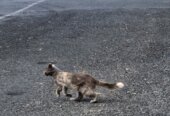An endowment fund is being launched to fund the ongoing replacement of the world’s largest predator proof fence

Helen Hughes at Maungatautari. Photo: Chris Gardner
If the fund reaches its $42 million target it would return $2 million a year, Sanctuary Mountain Maungatautari chief executive Helen Hughes told Tuesday’s meeting of Waipā District Council’s Maungatautari Reserve Committee.
Hughes was presenting on the Maungatautari Ecological Island Trust trust’s annual operational management plan which council community services manager Brad Ward bought before the committee for approval. The trust’s service agreement with the council includes having the plan approved, Ward said.
“We are replacing segments of the fence as every breach happens, and an average is a 30-year life span,” Hughes said.
She expected the cost of full replacement of the fence protecting 3363 hectares of mountain reserve to be around $40 million – double what it cost to build about 20 years ago.
Parts of the fence are replaced periodically thought the trust’s maintenance programme – sometimes it simply involves replacing rivets.
Hughes was responding to a question from Cambridge Ward councillor Roger Gordon who was concerned about the life of the fence and the cost of replacing it.

Sanctuary Mountain Maungatautari, viewing tower
The trust made a $500,000 loss – most of it in depreciation – in the financial year to June 30 after the Department of Conservation withdrew funding from the project.
When it was set up, the $5000 a day project was funded equally by the conservation department, Waipā District Council and Waikato Regional Council.
Following the loss of funding the trust had shed eight rangers. It is now operating with six, and as a result what Hughes called halo work – trapping predators outside of the predator proof fence – had been cut from the work programme.

The conservation “island” at Maungatautari.
The cuts have also pushed her team to their limits at times of storm damage when fallen trees and branches breach the fence and repair work is required quickly.
Hughes shared frustration that the trust’s application for a Lottery Grant for $400,000 had been declined, although it had been encouraged to resubmit a $250,000 application in the New Year.
The trust has also applied for further help from the Department of Conservation and had hired a tourism marketing specialist who was working on raising the project’s profile.

A pair of kōkako at Sanctuary Mountain Maungatautari.
Hughes shared the vision of the project eventually becoming self-funded with the development of a new tour tailored to visitors to Hobbiton and Waitomo and the development of a Kiwi experience.
“We have 3000 kiwi that live on the maunga,” Hughes said. “There will be a point when Maungtautari might become full.”
Maungatautari Ward councillors and committee chair Mike Montgomerie said he regularly heard kiwi from his front door every night.
He described it as “a total taonga”.
The committee unanimously voted to accept the trust’s operational management plan.

Kiwi on Sanctuary Mountain Maungatautari








